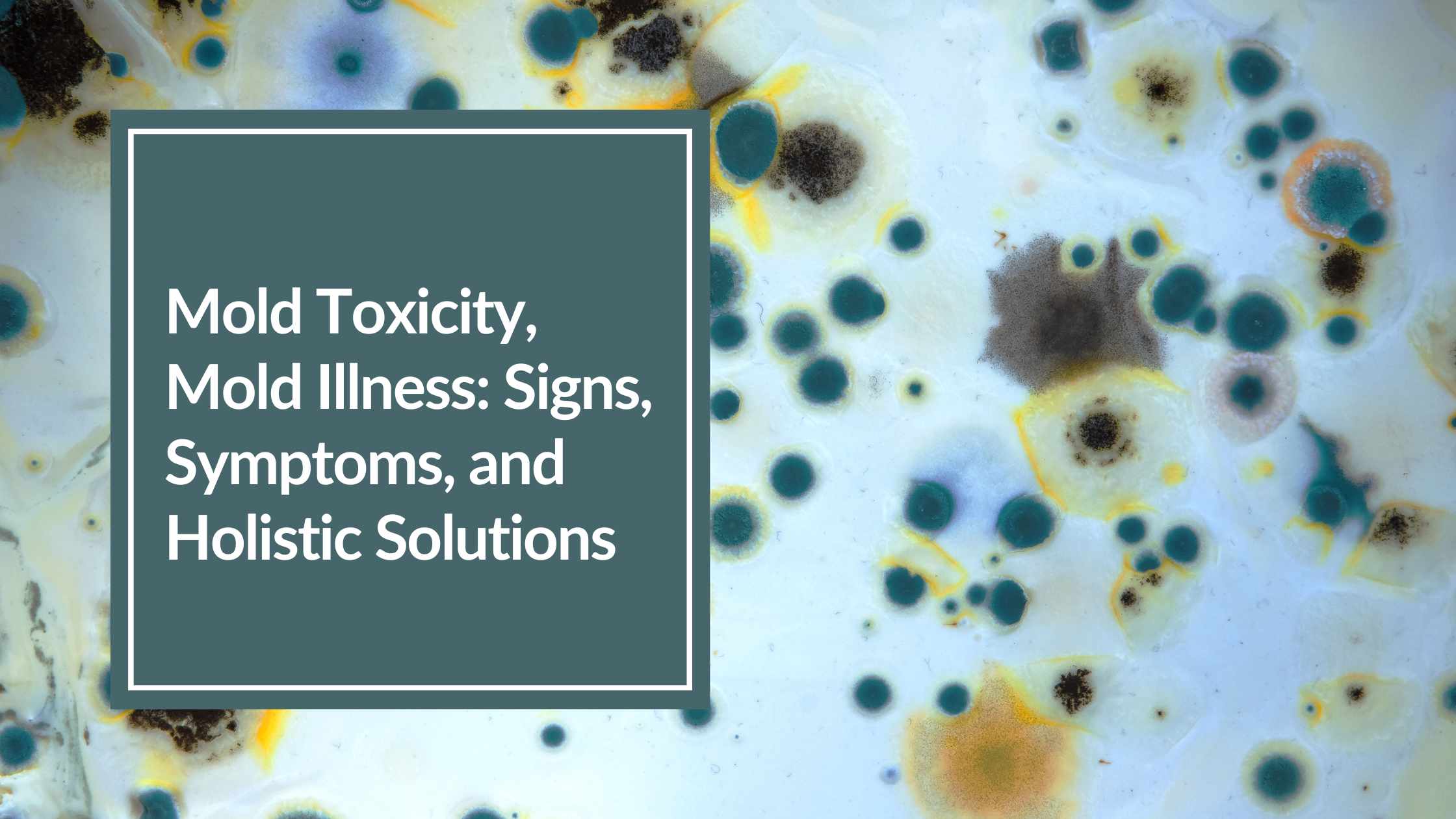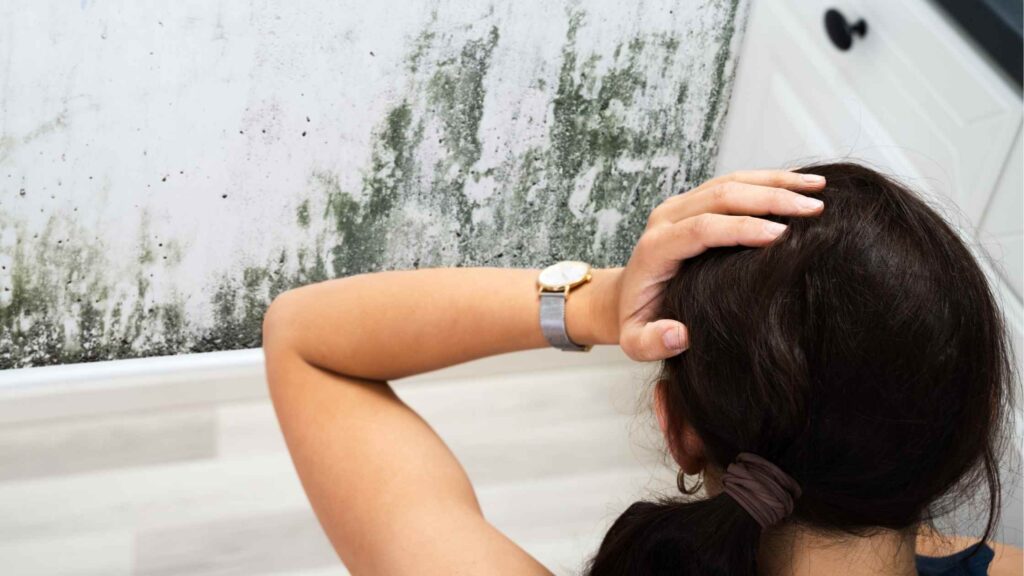
Mold toxicity is more common than you think.
It’s is also known as CIRS, Chronic Inflammatory Response Syndrome. Some people have mold allergy, as opposed to mold illness or mold toxicity. The Respiratory System can be stressed with mold and mycotoxin exposure.
Recently, the world has learned of Suzanne Somers death, from breast cancer. Did you know she also struggled with black mold and mold toxicity too?
I’m sure many of us have come across mold at some point in our lives, whether it was on old food or in damp corners of our homes. Scrubbing the bathroom silicone of mildew can ba a daunting job. But did you know that certain kinds of molds can potentially lead to serious health problems? This is what we refer to as mold toxicity. Mold toxicity is a type of biotoxin illness, also known as Chronic Inflammatory Response Syndrome (CIRS), and it’s not something to be taken lightly.
Biotoxin illness can occur with “fungi, spirochetes, apicomplexans, dinoflagellates and cyanobacteria” according to Dr. Shoemaker, a leader in biotoxin illness, from the website Surviving Mold.
Mold toxicity or mold illness occurs when a person comes into contact with the toxic byproducts produced by molds. These toxins can cause a variety of health problems, ranging from mild allergic reactions to severe chronic diseases. Unfortunately, mold illness is often misdiagnosed or overlooked due to the wide spectrum of symptoms it can produce.
The toxic byproducts are called mycotoxins.
The Causes of Mold Toxicity
Mold toxicity is primarily caused by an exposure or multiple exposures to toxic molds. These molds produce mycotoxins, which can cause damage to our health. Molds thrive in damp, humid, and poorly ventilated environments. This can include areas in our homes such as bathrooms, basements, kitchens, and even our bedrooms.
Mycotoxins are secondary metabolites produced by microfungi that are capable of causing disease and death in humans and other animals.
Mycotoxins, Clinical Microbiology Reviews 2003
Mold toxicity tends to be an under-recognized health issue. Even a brief understanding of mold illness or toxicity, causes, signs, symptoms, and holistic solutions, will empower you to become your own health advocate in creating balanced health in your body and home.
Occupations that involve working in damp or moldy environments, such as construction, farming, and winemaking, can also increase the risk of mold toxicity. Interestingly. certain genetic factors can make some individuals more susceptible to mold illness than others. Dr. Neil Nathan, author of the book Toxic: Heal Your Body From Mold Toxicity, Lyme Disease, Multiple Chemical Sensitivities, and Chronic Envirnmental illness, notes that 25 percent of the population is unable to handle mold exposures. This is a genetic issue and not everyone exposed to mold will develop mold illness or mold toxicity.
This is because our bodies have different capacities to detoxify and eliminate these toxins. However, prolonged or intense exposure to mold can overwhelm our body’s defense mechanisms, leading to the onset of biotoxin illness.
Recognizing the Signs and Symptoms of Mold Toxicity
The signs and symptoms of mold illness can be quite varied. This can make it challenging for doctor’s to recognize, and even diagnose issues with mold, and often leads to misdiagnosis. Some of the common symptoms include respiratory problems such as coughing, wheezing, and shortness of breath. Skin irritations, eye problems, and sinus congestion are also common.
Mold illness can also affect our neurological system, leading to symptoms such as headaches, poor memory, difficulty concentrating, and mood swings. More severe cases can result in chronic fatigue, weight fluctuations, joint pain, and even autoimmune disorders.
As you can see, these symptoms can also be associated with many other health conditions, making it pertinent to consider mold toxicity when other diagnoses don’t seem to fit.
The Effects of Mold Toxicity on Your Health
Mold exposure can have far-reaching effects on your health. Apart from the physical symptoms mentioned above, it can also impact our mental health. Anxiety, depression, and sleep disorders are common among individuals with mold illness. So is frequent urination, and this may be evident in a Full Scan report, showing stress in the urogenital system.
Long-term exposure to mold toxins has been linked to chronic inflammatory conditions such as fibromyalgia and chronic fatigue syndrome. Some sources note that mold toxicity may also increase the risk of developing autoimmune diseases and certain types of cancer.
Moreover, mold illness can exacerbate existing health conditions. Often those suffering with Lyme and Lyme Coinfections, will also have mold issues. The Immune System is burdened. For instance, it can worsen asthma and other respiratory conditions, and it can increase the severity of allergic reactions in individuals with allergies.
What Does Mold Toxicity Look Like?
Figuring out the symptoms of mold toxicity can be a complex process due to its wide range of symptoms.
It is a process of connecting the dots between what your body is telling you, any suspected exposures, and your body systems, like your immune system. There are different types of mold and mycotoxin tests, including our bioenergetic testing process, which will include other energetic toxins that exacerbate mold exposure in some individuals. Many times, mold comes along with energetic Lyme bacteria and other coinfections.
In some cases, a visual contrast sensitivity (VCS) test might be conducted. This is a non-invasive screening test that can indicate the presence of biotoxins in your body. We do not diagnose here at CBH Energetics, but we do assist you in creating balanced health, despite your challenges. We always want clients to visit a licensed healthcare professional. If you suspect that you have mold toxicity, it’s important to support your body in drainage and detoxification, along with nutrition and rest.
Holistic Solutions for Mold Toxicity.
There are several holistic approaches to managing mold in your home. These aim to support your body’s natural healing processes and improve your overall health. Here are a few:
- Detoxification: This involves supporting your body’s natural detoxification pathways to help eliminate mold toxins. This can be done through dietary changes, homeopathy, herbal supplements, and certain therapies such as sauna therapy, if applicable to you.Many of our clients that have resonating molds on their Full Scan also have homeopathic remedies like Myco-Tox or herbal remedies like Lapacho Intrinsic. These assist in detoxification, along with numerous drainage remedies we have. Testing helps narrow down numerous supports and combined regimens for mold and Candida.
- Nutritional Support: Eating a nutrient-rich diet can help support your immune system and reduce inflammation. Foods rich in antioxidants, many fruits and vegetables, are particularly beneficial as they support byproducts created by your own liver detoxification. Many mold experts recommend cutting down the amount of sugar consumed, as sugar can provide energy for the organism. Some fruits carry specific molds, like Botrytis, which can contribute to the body’s overall burden and complicate the detoxification processes, while increasing symptoms.
- Stress Management: Chronic stress can weaken your immune system and exacerbate symptoms of mold toxicity. Techniques such as meditation, yoga, and deep breathing can help manage stress levels. This is important as there is a connection between stress and your Immune System.
- Sleep Hygiene: Good quality sleep is essential for healing and recovery. Establishing a regular sleep schedule and creating a sleep-friendly environment can greatly improve sleep quality. This helps detoxification and lymphatic drainage for the Nervous System.
These holistic strategies should be tailored to your individual needs
and that’s where bioresonance testing comes in!

Preventing Mold Growth to Prevent Mold Toxicity
Preventing mold growth in your home is crucial in managing mold and your body. Here are some strategies:
- Control Humidity: Molds thrive in humid conditions. Use dehumidifiers and air conditioners to maintain a humidity level of 30-50% in your home. Open windows in a steamy bathroom.
- Improve Ventilation: Ensure that high-moisture areas such as bathrooms and kitchens are well-ventilated. Open windows and use exhaust fans regularly.
- Fix Leaks: Regularly check for leaks in your home and fix them promptly. This includes leaks in your roof, walls, and plumbing.
- Clean Regularly: Regular cleaning can prevent mold spores from settling and growing in your home. Pay special attention to damp areas like bathrooms and basements. Bleach should NOT be used to clean mold, as it only kills surface molds, and may leave mold to sink deeper into porous surfaces, according to Mold Masters.
Also, make sure you wash pet regularly bedding in hot water! Pets can be affected by mold as well. If you suspect this is an issue for your pet, we offer Full Scans for pets, on our website Petmedella!
Remember, prevention is always better than cure. By preventing mold growth, you can significantly reduce the risk of mold toxicity.
Steps to Take if You Suspect Mold Toxicity
If you suspect that you have a mold issue, don’t worry. There are steps you can take to help your body. As mentioned earlier, uncovering mold as a cause of your health issues can be challenging, and finding support is important.
Consider testing your environment for mold with something like an ERMI test. Learn more about ERMI testing here.
Can you get a professional mold inspection for your home or workplace? This can help identify potential sources of mold exposure. If mold is found, it’s essential to have it professionally removed to prevent further exposure. Mold remediation needs to be done properly. This will help your body, as you will be removing the source of the mold properly, and removing the burden of high levels of exposure from your environment.
Consider implementing some of the holistic solutions mentioned earlier. These can support your body’s healing process and help manage symptoms of mold illness.
Living with Mold Toxicity: Tips and Resources
Living with mold illness can be challenging, but with the right strategies and resources, it’s possible to manage this condition effectively. Here are some tips:
- Educate Yourself: Understanding mold illness can empower you to take control of your health. There are many resources available online, including websites, blogs, and forums dedicated to mold illness.
- Find Support: Connecting with others who are dealing with mold illness can provide emotional support and practical advice. Consider joining a support group or online community.
- Stay Positive: Dealing with mold illness can be emotionally draining. Try to stay positive and focus on the steps you’re taking towards recovery. Remember, recovery is a journey, and every step counts.
Your takeaways for mold toxicity
Mold toxicity is a complex and often misunderstood health condition. However, with awareness, learning, and effective management strategies, it’s possible to overcome this challenge. The key is to listen to your body, seek professional help when needed, and take proactive steps to reduce exposure to mold. Remember, your health is your greatest wealth.
Bioenergetic testing can be supportive of body systems burdened by mold.
